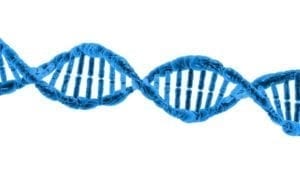What if we could harness a naturally occurring compound to starve and kill serious brain tumors? According to Medical XPress, researchers from Queen Mary University of London are working to do just that. In preclinical research funded by Brain Tumor Research, researchers evaluated inositol hexaphosphate (IP6) as a potential treatment for medulloblastoma. Check out the full findings published in Nature Communications.
IP6
According to the Memorial Sloan Kettering Cancer Center (MSKCC):
Inositol hexaphosphate (IP6) is a carbohydrate found naturally in many plants and mammalian cells, where it performs important messenger roles and affects numerous cellular processes. It was shown to have anticancer and anti-angiogenic effects.
IP6 can be found in many cereals, legumes, and nuts. While naturally occurring, IP6 may also be created in a laboratory setting. In addition to its other benefits, IP6 reduces chemotherapy-related side effects.
During the preclinical research, researchers evaluated IP6 on mice models of medulloblastoma, as well as human tissue samples and cell lines. Their interest spurred from the fact that, despite multiple forms of medulloblastoma existing, all patients are usually treated with surgery, chemotherapy, or radiotherapy. However, the researchers share, certain subtypes, such as G4, are associated with worse outcomes. Thus, additional treatment options are needed.
G4 Subtype & Research
Normally, cell growth is controlled by turning genes on or off, a process known as epigenetics. According to the CDC:
Epigenetics is the study of how your behaviors and environment can cause changes that affect the way your genes work. Unlike genetic changes, epigenetic changes are reversible and do not change your DNA sequence, but they can change how your body reads a DNA sequence.
However, cancer can interrupt the epigenetic process. As a result, proteins may prompt tumor development. In past research, epigenetics have already been linked to medulloblastoma; in particular, the BMI1 protein is often highly expressed in G4 medulloblastoma. BMI1 also helps medulloblastoma proliferation. While G4 medulloblastoma has high levels of BMI1, these same tumors do not have CHD7.
But researchers showed that treating medulloblastoma with IP6 inhibits tumor growth and progression. Further, combining IP6 therapy with chemotherapy also starves and kills the cancerous cells. Although these results are promising, researchers must now see if the results can be replicated in human clinical trials down the line.
Medulloblastoma
Sometimes called a cerebellar primitive neuroectodermal tumor (PNET), medulloblastoma is a brain cancer which forms in the posterior fossa, near the base of the skull. However, because of how malignant these tumors are, medulloblastoma often quickly spreads to other areas of the brain and spinal cord. Up to 20% of childhood brain tumors are medulloblastoma, making it one of the most common forms of brain cancer in children. Most commonly, the cancer forms in those under 16. While it is more rare for adults to develop medulloblastoma tumors, it is possible. For non-metastasized medulloblastoma, the survival rate is 70-80%, though this drops once the cancer spreads. Symptoms include:
- Nausea and vomiting, particularly in the mornings
- Severe or persistent headaches
- Clumsiness
- Blurry or double vision
- Changes in handwriting or motor skill abilities
- Back pain
- Difficulty walking
- Extreme fatigue
- Seizures
- Loss of bladder and bowel control
Learn more about medulloblastoma.






